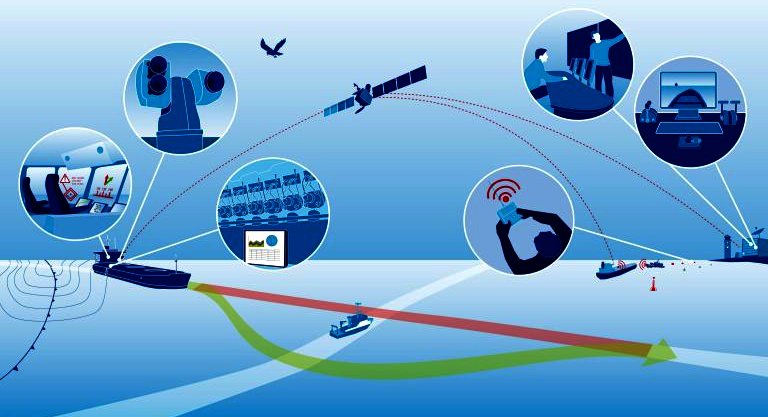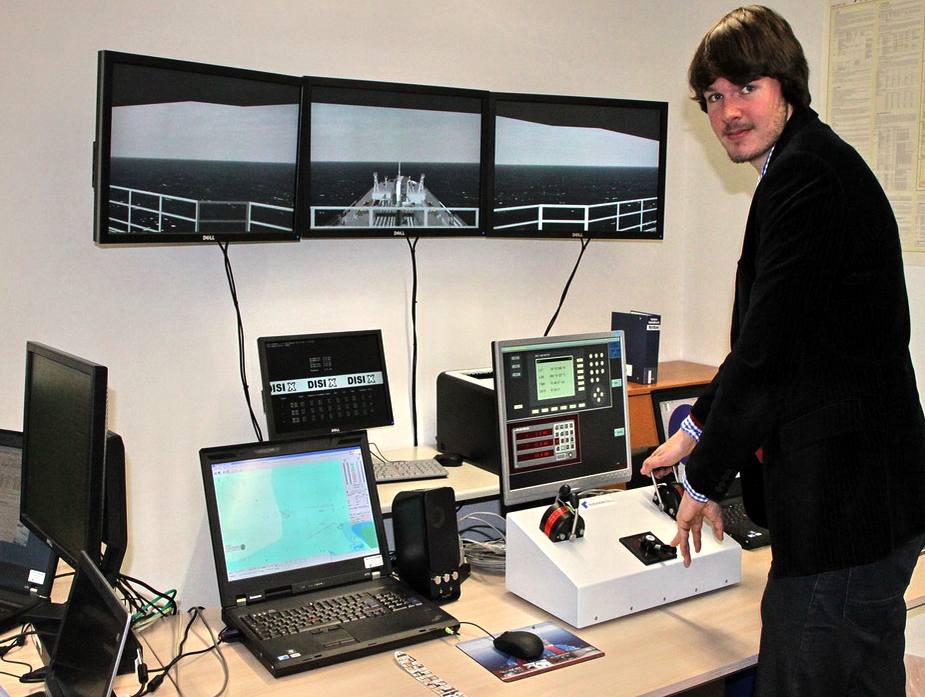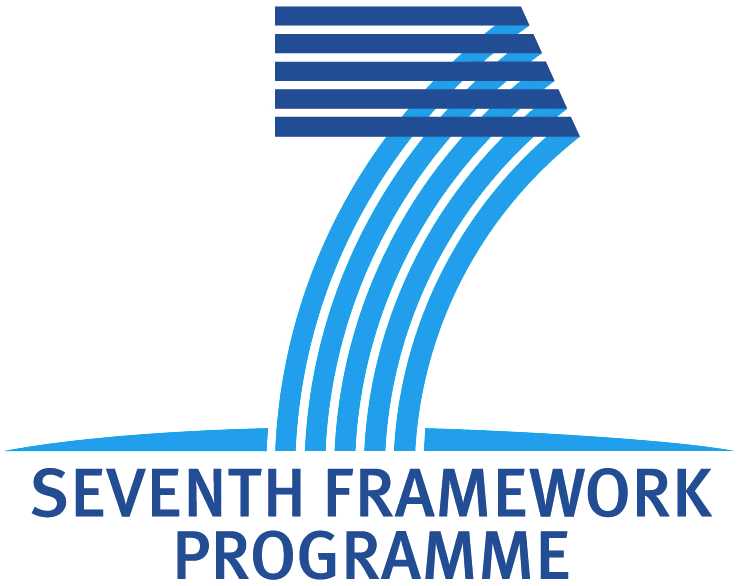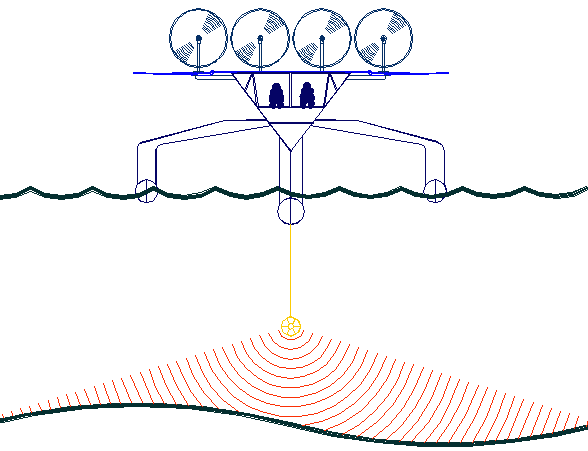|

The MUNIN project derives its name from: Maritime Unmanned Navigation through Intelligence in Networks.
The programme is a collaborative research project, co-funded by the European Commissions under its Seventh Framework Programme.
MUNIN aims to develop and verify a concept for an autonomous ship, which is defined as a vessel primarily guided by automated on-board decision systems but controlled by a
remote operator in a shore side control station.
Maritime transport within the EU faces challenges such as significant increases in transport volumes, growing environmental requirements and a shortage of seafarers in the future. The concept of the autonomous ship brings along the potential to overcome these challenges. It allows for more efficient and competitive ship operation and increases in the environmental performance of vessels. Furthermore the shore based approach offers “seafaring” the possibility to become more socially sustainable by reducing the time seafarers spend away from their families.
Within MUNIN a consortium of eight partners led by Fraunhofer CML with scientific and industrial background will reflect upon operational, technical and
legal aspects in connection with the vision of an autonomous ship. Solutions for e.g. an autonomous bridge, an autonomous engine room, a shore side operation center and the communication architecture linking vessel and a shore operator will be developed and verified. Besides this long term goal of an autonomous ship MUNIN’s results will also provide efficiency, safety and sustainability advantages for existing vessels in short term. This includes e.g. environmental optimization, new maintenance and operational concepts as well as improved bridge applications.
NEW
FUNCTIONS FOR THE AUTONOMOUS SHIP
The KISS principle will also be applied to the ship itself and it is also important to look at how existing vessels can be modified to support unmanned operation. At the hardware level, technical modifications will be necessary, for example to the fuel-processing system, while an electric-powered water-jet for back-up propulsion and steering may have to be retrofitted.
New sensors to replace the look-out are also an important part of the unmanned ship. A combination of high resolution radar, low-Iight and infrared cameras form the 'advanced sensor system'. Most of the technology involved is already available and its adoption would be more a question of cost than of general availability. The sensor-system will be integrated with more conventional equipment such as the AIS system and ARPA
radar. Computer-based data fusion, using Information from the various sensors, will further increase the capability of the sensor system. All these systems are already in use on board the merchant ships. The MUNUN project develops this daily practices only further- it combines the existing with new sensors, systems and programs. New ship developments are not required - only another technic will be used to steer to vessel.
SHORE SUPERVISION & CONTROL
But it will not be a pure robot vessel. A consequence of the KISS principle is the introduction of the shore control center (SCC), which will cooperate with the ship’s own system to ensure effective and safe operation. The vessel systems will relieve the SCC operators of tedious monitoring and control tasks for most of the voyage. In the event of something unexpected that is beyond the capacities of the onboard systems, the SCC can rapidly provide human guidance. On the other hand, minimizing SCC interaction with the vessel will be important as a means of reducing communication costs.
Automating the look-out also raises the issue of how to handle direct interactions with other vessels, VTS and other shore facilities. Such facilities must be in place that will enable AIS, VHF and other communication to be routed through to the SCC operator. Sensors detect when engine components are required to be exchanged because of upcoming wear – this has long been practice in the aircraft industry.
Project manager Christoph Burmeister at the Fraunhofer CML in Hamburg: “The primary function of the land based control is the continuously monitoring of the autonomous system. Of course, they can in case of doubts per remote control intervene, but our target is to minimize this as much as possible. Our target is an unmanned vessel hence it will be monitored continuously on a high level”.
Also at docking and undocking human beings shall overtake the control of the ship. When the ship leaves a port a minimal crew navigates the ship to the open sea and will be picked up by pilot boats or helicopter. From there on the vessel runs without “human crew” until it comes close to its destination where an additional crew takes over and brings the ship safe into port.
Bulk carrier will be the first ships which are in focus of the MUNIN-partners. But already
the scientists are considering how they can implement other ship types into this program.
Much work still needs to be done before this objective can be achieved. In autumn 2015 the MUNIN project shall be finished. Not only technical aspects of the project still
need to be clarified. Beside engineers and computer scientists also lawyers are involved. For example there exist the UNCLOS
(United Nations Convention on the
Law of the
Sea), which describes a statutory duty to feature a look-out. Can this be assumed by sensors, cameras and land based control stations? These are the issues that occupy the project partner as well, says Burmeister: “Some of the existing international regulations probably must be adapted”.
At the end a real autonomous vessel will be send off for the first time.

EVENT
- 30 Aug 2013: Public MUNIN and Marine Autonomy Workshop, Trondheim
The Public MUNIN and Marine Autonomy Workshop will take place at MARINTEK in Trondheim, Norway, on August 30th, 2013 from 9:00 to 13:00. In the workshop on applications of autonomy in the marine industry the following topics will be addressed:
*AMOS Centre of Excellence
*Ocean Space Centre
*Seatonomy
*Merchant ship
*Surface surveillance
*Aquaculture
*Environmental surveillance
*Offshore intervention
THE
KISS PRINCIPLE
KISS is an acronym for "Keep it simple, stupid" as a design principle noted by the
U.S. Navy in 1960. The KISS principle states that most systems work best if they are kept simple rather than made complex; therefore simplicity should be a key goal in design and unnecessary complexity should be avoided. The phrase has been associated with aircraft engineer Kelly Johnson (1910–1990). The term "KISS principle" was in popular use by 1970. Variations on the phrase include "keep it stupid simple" and "keep it simple and straightforward".
The acronym was reportedly coined by Kelly Johnson, lead engineer at the Lockheed Skunk Works (creators of the Lockheed U-2 and SR-71 Blackbird spy planes, among many others).
While popular usage has translated it for decades as, 'Keep it simple, stupid', Johnson translated it as, 'Keep it simple stupid' (no comma), and this reading is still used by many authors. There was no implicit meaning that an engineer was stupid; just the opposite.
The principle is best exemplified by the story of Johnson handing a team of design engineers a handful of tools, with the challenge that the jet aircraft they were designing must be repairable by an average mechanic in the field under combat conditions with only these tools. Hence, the 'stupid' refers to the relationship between the way things break and the sophistication available to fix them.
The acronym has been used by many in the United States Air Force and the field of software development.

Scientific
papers that where written in connection with the MUNIN project:
LINKS
http://en.wikipedia.org/wiki/KISS_principle
http://articles.maritimepropulsion.com/Ghost-ships-on-the-Oceans-Who-says-it-doesnt-work
http://www.unmanned-ship.org/munin/
http://www-robotics.jpl.nasa.gov/publications/Yoshiaki_Kuwata/Kuwata11IROS_final_v3.pdf
http://www.theengineer.co.uk/news/epsrc-funds-usv-collision-avoidance-system/1004270.article
http://www.qub.ac.uk/IntelligentSystems/COLREGs-basedEvasiveDecisionMakinginMaritimeVehicles/
http://gow.epsrc.ac.uk/NGBOViewGrant.aspx?GrantRef=EP/I003347/1
http://www.eda.europa.eu/projects/projects-search/effective-procurement-methods
http://www.eda.europa.eu/info-hub/defence-data-portal
http://www.eda.europa.eu/2013/safety-and-regulations-for-european-unmanned-maritime-systems-(sarums)
http://www.eda.europa.eu/procurement-gateway/opportunites/eda-procurement/procurement-view
http://www.defense-unmanned.com/article/1022/asv-wins-contract-for-unmanned-boat.html
http://rpdefense.over-blog.com/tag/LEMUSV/
http://www.science.mod.uk/Engagement/the_portal.aspx http://www.science.mod.uk/Engagement/enterprise.aspx https://www.dstl.gov.uk/centrefordefenceenterprise https://www.dstl.gov.uk
UKHO
- United Kingdom Hydrographic Office
http://www.maritimejournal.com/news101/industry-news/ukho-appoints-new-national-hydrographer http://en.wikipedia.org/wiki/United_Kingdom_Hydrographic_Office http://www.ths.org.uk http://www.spri.cam.ac.uk/friends/committee/ http://www.thefutureofnavigation.com/ten_steps.aspx http://www.quaynote.com/ankiti/www/?code=ecdis13&f=programme
Wiki
United_Kingdom_Hydrographic_Office
https://www.dstl.gov.uk/insight
US
Department of Navy Research, development & Acquisition - http://acquisition.navy.mil/ US
Fleet Forces Command - http://www.cffc.navy.mil/
US
http://www.msc.navy.mil/
http://en.wikipedia.org/wiki/Naval_Oceanographic_Office

PATENT
PENDING - The Bluefish SNAV
platform, presently under development, is a robotic ocean workhorse. Based on a stable
SWASH
hull that can achieve high speeds for long duration. This robot
ship uses no diesel fuel to monitor the oceans autonomously (COLREGS
compliant) at 6-7 knots continuously 24/7 and 365 days a year - only possible with the revolutionary
(patent)
energy harvesting system.
The vessel may also sprint from one location to another covering
distances in excess of 100 nautical mile at speeds of over 10 knots -
Thus may reach a target area within a relatively short response time. The
hullform is ideal for automatic release and recovery of ROVs
or towed arrays, alternating between drone and fully autonomous modes.
International development partners and agents are welcome. Initial
results suggest that this vessel
pays for itself in fuel saved every ten years.
|



